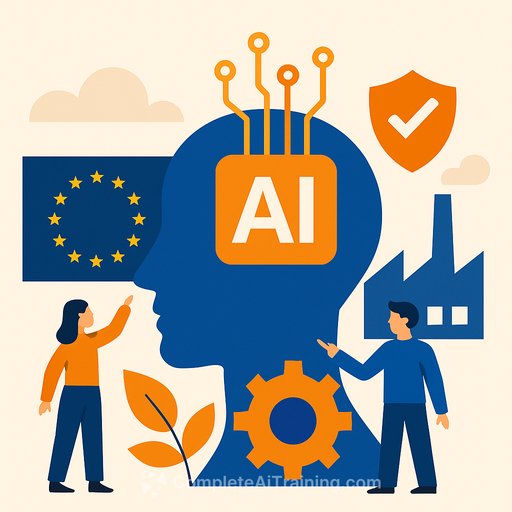European Commission Unveils New AI Strategy for Autonomy and Innovation
The European Commission is preparing a strategy titled "Applying Artificial Intelligence" to build an autonomous AI ecosystem in Europe. The goal is to reduce dependence on the United States and China while increasing security, resilience, and industrial competitiveness.
The plan promotes tools developed within the EU and prioritizes responsibility, ethics, and control across high-stakes domains. Defense, healthcare, and manufacturing are called out for targeted development and deployment.
What's in the strategy
- EU-first AI tooling: Preference for models, platforms, and infrastructure built and hosted in the bloc to support sovereignty and reliability.
- Sector-grade use cases: Encouragement for developers to advance AI for defense, healthcare, and manufacturing under strict accountability and oversight.
- Public administration: Adoption of AI in government services to improve service quality and operational efficiency.
- Risk management: Recognition of coercion and abuse risks by state and non-state actors, including during data collection, training, and software use.
- Phased rollout: Concept and implementation roadmap are expected on October 7, followed by staged deployment across regulatory and technical layers.
Expected outcomes
- Stable EU AI ecosystem: Shared ethical and regulatory foundations to guide deployment and scaling.
- Investment and R&D: Attraction of capital to advance AI research and applied engineering in the EU.
- Single market strength: Stronger intra-EU AI market with safety and transparency standards.
- International partnerships: Cooperation focused on responsible and sustainable development at a global level.
For IT and development teams: what to prepare now
- Data residency and localization: Plan for EU-based training, inference, and storage. Map data flows and ensure clear lineage and deletion policies.
- Model sourcing strategy: Evaluate EU-built/open models and EU-hosted APIs. Maintain a procurement checklist covering license terms, finetune rights, and security commitments.
- Governance-by-default: Enforce audit logs, RBAC, key management, and signed artifacts for datasets, model weights, and prompts. Keep model cards and change logs current.
- Testing and evaluation: Set up automated evals for accuracy, bias, toxicity, and safety. Include red-teaming and adversarial tests before each release.
- Monitoring and incident response: Track drift, prompt leakage, and unsafe outputs. Define escalation paths and rollback procedures.
- Privacy-preserving options: Consider techniques like federated learning or synthetic data where source data is sensitive.
- Compliance documentation: Document intended use, risk level, data sources, and human oversight. Align with emerging EU safety and transparency standards.
Risks called out in the document
- Coercion or abuse by state and non-state actors.
- Compromise during dataset creation and model training.
- Misuse or tampering with software components across the AI stack.
Timeline and next steps
The Commission plans to present the concept and implementation roadmap on October 7. A phased transition will follow across EU regulatory and technological layers.
Teams building or buying AI in the EU should start readiness work now: inventory models and data, tighten security, formalize evaluations, and prepare documentation aligned to safety and transparency expectations.
Context and further reading
For a broader view of the EU's approach to AI, see the European Commission's policy overview here.
If you're upskilling for EU-grade AI engineering and compliance, review this developer-focused certification: AI Certification for Coding.
Your membership also unlocks:






